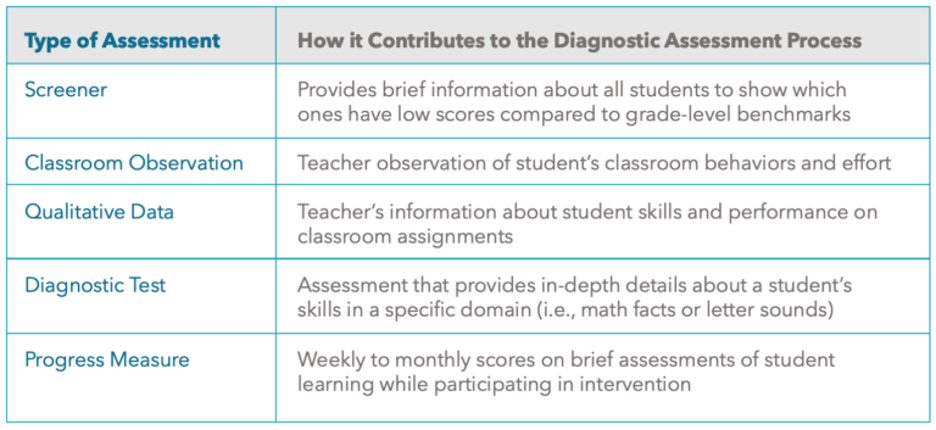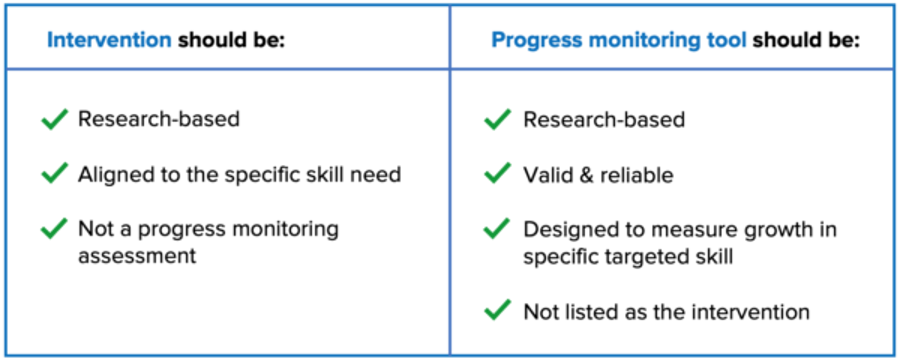May 20, 2021
Diagnostic, or drill-down, assessment plays an important role in how teachers identify and understand learning strengths and needs in specific skill areas. Understanding how to utilize diagnostic assessments in education and use them to align tools with learner needs is essential for students to stay on track for grade-level expectations.
If a diagnostic assessment process is not part of your current education system, it’s not too late to implement one. In this blog, you will learn:
- Tips for utilizing diagnostic assessments most effectively
- The difference between diagnostic assessment and diagnosis
- Specific assessments that are often used in the diagnostic assessment process
- And more
What is a diagnostic assessment in education?
In education, diagnostic assessment is the use of multiple measures and reports to identify student strengths and needs in specific skill areas. With this information, teachers can provide instruction to properly address learning needs.
It’s also a key element of a multi-tiered system of supports (MTSS). Within the context of an MTSS framework, diagnostic assessment is used to better understand students’ academic or social-emotional behavior needs that were broadly detected by a universal screener.
There are five types of assessments often used in the diagnostic assessment process:

Why is alignment so important?
Skipping the diagnostic assessment process can unnecessarily lead to intervention alignment issues—i.e., do the student’s needs, the selected intervention, and the chosen progress monitoring tool all agree?
Without diagnostic assessment, interventions might be selected based on:
- Familiarity
- Guesswork
- Doing what has always been done
Taking the time to get to the specific skill gap or root cause significantly increases the likelihood that a selected intervention will be effective.
Diagnostic assessment vs. diagnosis
Diagnostic assessment is the process of identifying the reason for a problem, while diagnosis is the product of a comprehensive evaluation to match a student’s symptoms with the criteria for a specific disorder.
While they serve very different purposes, both play an important role in identifying student learning challenges and needs. Remember, the presence of a diagnosis does not automatically mean a student is eligible for special education.
Sometimes, a student who has been diagnosed with a certain disorder might not qualify for special education because overall achievement is strong. This can only be determined when requested evaluation data is considered to see if it indicates a need for special education services.
Meet the needs of every student
Utilize the diagnostic assessment process to meet every learner’s needs.
4 tips for successfully utilizing diagnostic assessments in education
Implementing diagnostic assessments in the classroom can be hard work. Use these four tips for a successful transition into utilizing diagnostic assessments in education.
#1: Use data to guide diagnostic assessments
By using whole child data, you ensure that a learner’s success is being supported through many interconnected, data-informed lenses. To do this, be sure your team is using data to guide assessments:
- Use high-quality data that is valid, reliable, and accurate. If teams are using assessments that aren’t measuring what they’ve set out to measure, the data produced by the assessment won’t be of high enough quality to drive important decisions, like intervention methods.
- Use multiple measures and data points. For individual learners, this helps you to understand patterns rather than using a single measure.
- Invest in tools that make this process possible. Using the right tools gives educators the instant ability to get to the bottom of a problem, explore a student’s needs, and efficiently determine the best next step.
#2: Ensure progress monitoring alignment
To measure student improvement, a progress measure that matches the instructional focus should be used at regular intervals. Using a progress monitoring assessment shows whether the intervention is working and if it’s working fast enough.
These two progress monitoring tools are typically used by alternating between the two assessments every other week:
- General outcome measures help you to determine whether the student is on track to meet grade-level expectations. Examples of general outcome measures for progress monitoring include FastBridge and Star Assessments from Renaissance.
- Skill-based measures help you to better understand performance on a specific skill. Renaissance’s unique Star Phonics assessment allows you to diagnose 12 critical phonics categories and 102 skills that are essential to success in reading.
As a team, educators check the alignment between the student’s needs, intervention, and the progress monitoring tool to ensure effectiveness. If progress is not being made, intervention is necessary, or additional diagnostic assessments could be used to identify specific learning gaps.
However, for many students, a process of diagnostic assessment and targeted instruction and intervention will result in learning improvements.

#3: Connect diagnostic assessment to a specific plan
Once the diagnostic assessment process is complete, and intervention and progress monitoring tools have been selected, it’s time to document a concrete plan.
Creating a specific plan connected to a diagnostic assessment involves articulating the identified goals of a student and the actions the education team will take together to help reach them. When writing student goals, make sure they are…
- Specific;
- Measurable; and
- Time-bound
…to easily determine whether or not they’re achieved. Also, be sure to include:
- Intervention strategy
- Duration
- Frequency
- Setting location
#4: Create a plan for tracking fidelity
Finally, ensure your team has a process and document or tool for tracking fidelity metrics, because the data gathered here is key to evaluating intervention effectiveness down the road.
When tracking, be sure to ask yourself these two questions and to include all necessary information in your report:
- “Did we do what we said we would?” Note whether students are participating in the intervention, what their engagement looks like, and how often/how long you provided the intervention. You can also include what the setting is like when you’re implementing interventions and who is acting as the interventionist. Identifying all of these points will help with evaluating progress monitoring information.
- “Did we do it the way it was designed?” Think of this like cooking food using a recipe. Did you follow all of the instructions exactly, or did you add extra steps or leave something out? If you improvised at any point, note this during tracking. If results turn out poorly, you have this to look back on and can reevaluate and try it again.
Identify learner needs through diagnostic assessment with Renaissance’s comprehensive tools
If you don’t have a diagnostic assessment process in place throughout your school system, you could be doing more harm than good for your students. With Renaissance’s comprehensive assessment and management tools, educators use data to serve the whole child, equipping them with the best interventions possible for long-lasting results.
With these tools, educators can:
- Monitor learning and growth
- Identify academic and social-emotional behavioral needs
- Align targeted supports
As a result of diagnostic assessments and following established processes, learning is accelerated for each student.
If diagnostic assessment processes are not implemented in your schools to help successfully identify learners’ needs, they should be. Connect with an expert to learn how Renaissance can help.

